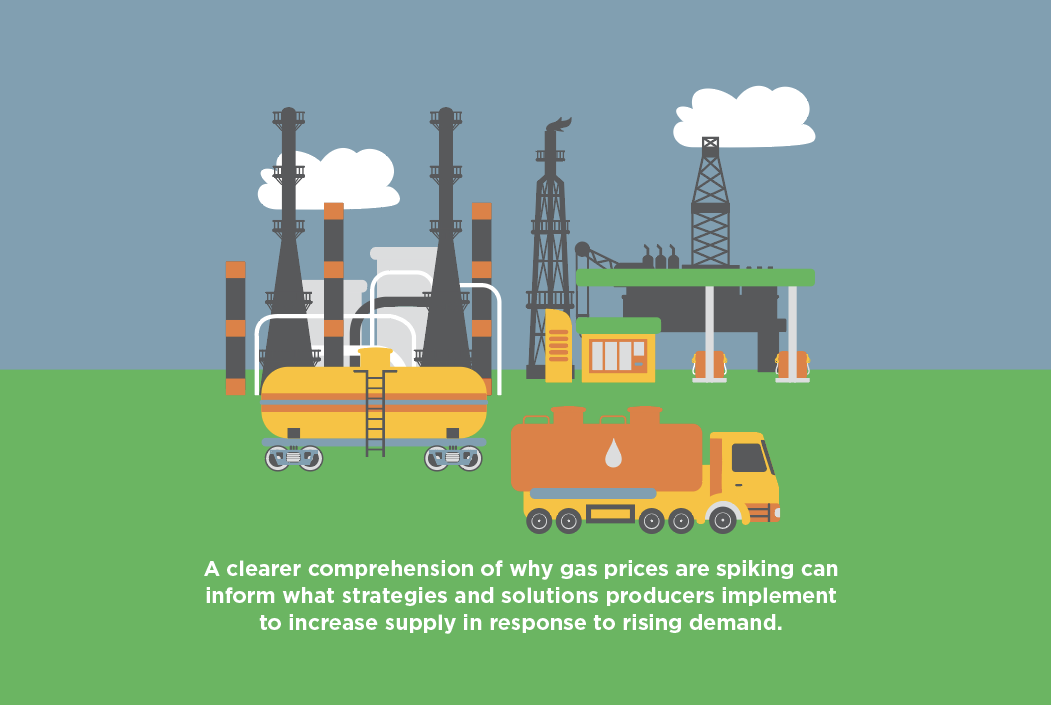From grocery bills to energy bills, more Americans are feeling the effects of runaway inflation. Climbing prices are a symptom of supply chain disruptions, the fallout of the coronavirus crisis, and increased demand, among a host of other contributing factors. But what is taking the biggest bite out of many families’ budgets is the price of gasoline. For a gallon of unleaded regular, motorists are spending $3.49 nationwide, according to the most up-to-date data from the U.S. Energy Information Administration. That’s up from $3.44 a week earlier and an increase of more than a dollar from what the cost was a year ago. In some parts of the country, such as California, gas prices are hovering around $5 per gallon.
In some respects, higher gas prices can be viewed as a net positive; it’s an indicator that the economy is humming along, with more people back on the job after a tumultuous few years. It may also be a plus for the oil and gas sector, up and down the industry vertical. However, when people have less discretionary income to spend, the economy, as a whole, winds up suffering. Because of this, it’s important to understand why energy costs are rising. A clearer comprehension of why it’s happening can inform what strategies and solutions producers implement to increase supply in response to rising demand.
Why are gas prices rising so appreciably?
According to industry experts, Americans are spending more at the pump for a variety of reasons. The first of which is attributable to Mother Nature. When Hurricane Ida struck the Gulf Coast in late August, many oil refineries went offline temporarily, which resulted in a dip in supply and a modest increase in prices. The category 4 storm roared ashore at a particularly inopportune time for one of the nation’s largest oil producers; a week prior, Colonial Pipeline experienced a cyberattack. Having to suspend operations also reduced the nation’s supply.
Even though Ida is now long gone, the adverse supply-side effects tend to persist, according to Tom Kloza, a chief analyst for the consulting firm Oil Price Information Service. Speaking to CBS News, Kloza noted that this is partially due to more Americans consuming greater amounts of gas in the summer months, considering it is vacation season. Additionally, as energy analyst Phil Flynn told CBS News, people are driving much more now than they were a year ago. At the time, to prevent gas prices from falling too precipitously, oil producers inside and outside the U.S. reduced their output at refineries, economist Philip Verleger added.

When energy costs rise, so does everything else
The price of oil is inherently volatile; it’s constantly fluctuating in response to the push and pull of supply and demand. And because oil is used for so many things — be it for making plastics to powering factory equipment — everything winds up costing more. As a result, there’s a ripple effect on the economy. If consumers spend more of their money on gas — or home heating oil — they have less to put toward other uses. If shippers spend more on transportation expenses, they may be forced to raise their prices.
Higher energy costs affect everyone in one way or another, and the best way to get prices back into the affordable territory is through better supply chain visibility. This can provide the intelligence oil and gas producers need to evaluate how they can maximize supply, whether that’s through more refinery activity, drilling, field exploration, or extraction. With this in mind, the American Petroleum Institute, among other industry trade groups, is calling on the White House to lift the current pause on new oil and gas leases so the U.S. can reduce its dependence on oil imports.

There is likely no single solution to finding the best balance between supply and demand. However, with Inspirage as your supply chain partner, you can develop a plan that works for your business. We’ve developed a comprehensive solution for downstream oil and gas supply chain planning that maximizes profits, increases responsiveness, and minimizes operational expenses. With our planning solution in place, your team can also mitigate uncertainties by increasing visibility into all of your production processes. Contact Inspirage today to learn more about how we can help your company do more.